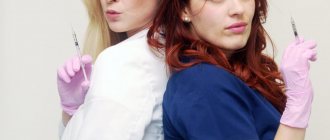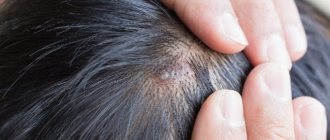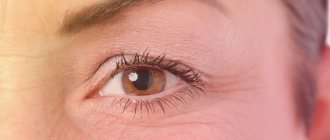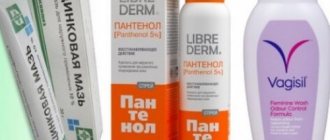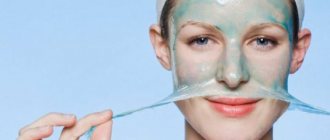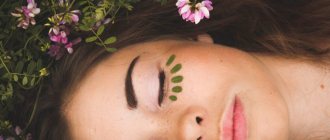On the path to restoring their former beauty and youth, women encounter many procedures and medications. Thus, one of the most popular procedures - the injection of Botox - leaves many patients confused: what is the difference in the use of Botox, Dysport, Xeomin and others? Which one is better/worse, more expensive or cheaper? Let's try to deal with these issues once and for all.
Botulinum toxin type A has been used in cosmetology for several decades. Its task is to eliminate facial wrinkles due to muscle fiber relaxation, as well as correct hyperhidrosis. The toxin blocks neuromuscular transmission, thereby relaxing the muscle.
The most well-known drugs today are the following: Botox, Dysport, Xeomin, Lantox, Relatox. These products are certified and approved for use in the Russian Federation.
We will analyze and compare the composition of the most common botulinum toxins type A, and also try to compare them based on the analysis of this data.
What is Botox?
Botox® Cosmetic is Allergan's best-known injectable neurotoxin that temporarily relaxes facial muscles to soften dynamic wrinkles caused by repetitive muscle movements.
It works by blocking nerve signals to the muscles so that the injected muscle cannot contract.
Botox was originally developed to treat conditions such as cerebral palsy, but was later used to treat wrinkles around the eyes, glabellar lines and forehead wrinkles.
After some time, cosmetologists began to use this drug to soften and smooth out wrinkles in the lip area, “rabbit lines” on the nose, chin and neck.
Botox can also relax your jaw muscles. “A very popular area for Botox injection is the masseter muscle, as well as for facial slimming. Treatment of this area produces positive cosmetic results and also helps patients who grind their teeth (bruxism).
Medicinally, it is used to treat hyperhidrosis (excessive underarm sweating), lazy eye (medically known as strabismus), chronic eyelid twitching (blepharospasm), chronic migraines, other types of muscle spasms, and vaginismus.
Main indications for the use of Botox
Expression wrinkles on the forehead (Botox on the forehead)
Botox on the forehead is one of the most common correction areas, but at the same time the most difficult. By relaxing the frontal muscle, it is possible to smooth out horizontal facial wrinkles in the forehead and get rid of the habit of wrinkled lips. The effect is usually very bright, which delights patients. Today we are moving away from the standards of a completely immobilized forehead and partially preserving facial expressions, including the movement of the eyebrows.
Separately, we note that the largest number of complications after Botox administration is associated specifically with the forehead area. First of all, this is drooping eyelids. As a rule, it occurs when injection technique is violated, incorrect selection of patients, or an excessive dose of the drug. With a pronounced excess of skin in the forehead area and very deep wrinkles, patients reflexively wrinkle their forehead, thus trying to raise their eyebrows.
When the muscle in the forehead area relaxes, in such cases the “skin accordion” smoothes out and the eyelids sag. Therefore, starting to correct this zone after 50 years, as a rule, is no longer recommended in 50% of cases. In such cases, we recommend that you pay attention to the procedure for filling wrinkles using preparations based on hyaluronic acid.
Botox is also powerless in the treatment of compression wrinkles that arise not from muscle activity, but from prolonged compression of the skin in a certain position. For example, with vertical oblique wrinkles on the forehead that appear when sleeping on the side.
Recommended dose for the forehead area: Botox 5-15 units, Dysport 20-40 units.
Wrinkles on the bridge of the nose
Botox in the area of the bridge of the nose allows you to get rid of vertical wrinkles between the eyebrows, which give a frowning appearance. With repeated injections, it is possible to wean off the passive habit of frowning and prevent further wrinkling and deepening of wrinkles. This is the easiest area to correct.
Recommended dose: Botox 5-15 units, Dysport 20-50 units.
Eyebrow shape correction
Please note that when Botox is injected into the forehead and orbicularis oculi muscle using a certain technique, it is possible to raise the eyebrows, thus solving the problem of sagging upper eyelid. However, to determine the possibility and advisability of such a procedure in a particular case, you should consult with your doctor.
Wrinkles around the eyes (crow's feet)
By blocking the orbicularis oculi muscle, it is possible to completely smooth out the “crow’s feet” in the eye area, as well as raise the tip of the eyebrow if necessary. The injection of Botox into this area is contraindicated in cases of severe swelling, very deep wrinkles and folds of skin around the eyes. We also note that Botox has virtually no effect on horizontal wrinkles under the eyes that arise passively when smiling. To correct them, a contouring procedure or laser resurfacing under the eyes is used.
Recommended dose for both eyes: Botox 10-20 units, Dysport 35-70 units
Correction of the shape of the nose, including narrowing the wings of the nose, raising the tip of the nose
In connection with the increasing study of the effects of botulinum toxins, the range of indications for their use is significantly expanding. In certain cases, it is possible to achieve changes in the shape of the nose. However, one should not overestimate the capabilities of Botox with this procedure. Good results can be achieved with the correct selection of patients. Possible combination with contour plastic surgery. You can read more about non-surgical rhinoplasty here. A preliminary consultation with a cosmetologist is required.
Wrinkles at the back of the nose
Many patients note the habit of frowning their nose. Botox easily copes with this problem. Side effects are excluded with the correct administration technique.
Recommended dose: Botox up to 5 units, Dysport up to 15 units
Drooping corners of the lips and labiomental wrinkles
The use of Botox for drooping corners of the lips is advisable when there is a pronounced tone of the muscle that lowers the corners of the lips. When it relaxes, the corners of the mouth rise. However, if the injection technique is violated, articulation and lip asymmetry may be impaired. Therefore, this procedure can only be performed by an experienced doctor under strict indications.
Recommended dose: Botox 1-3 units, Dysport 4-10 units
Wrinkles in the chin area
Often combined with correction of drooping corners of the mouth. Injecting Botox into the area of the mentalis muscle allows you to get rid of horizontal wrinkles on the chin, lengthen the chin, and even out the relief and dimples in the chin area. A fairly simple correction zone.
Recommended dose: Botox 1-2 units, Dysport up to 5 units
Purse-string wrinkles around the lips
This is a fairly rare area for correction with Botox, as it is often accompanied by impaired articulation and discomfort for the patient. The choice is usually made in favor of filling wrinkles with hyaluronic acid in combination with laser resurfacing.
Recommended dose: Botox 1-2 units, Dysport up to 5 units
Gummy (“horse”) smile
With the help of Botox, today it has become quite easy to correct the so-called “horse smile”. With such a smile, the upper teeth and part of the gums are completely exposed. By relaxing the muscle that lifts the upper lip, it is possible to lengthen the distance between the base of the nose and the red border of the lips, which allows you to hide the gums and make the smile more aesthetically attractive.
The procedure requires individual dose selection and mandatory consultation with a doctor.
Botox for cheek reduction
More recently, Botox has been used to visually reduce the cheeks by narrowing the lower part of the face. This was made possible by relaxing and relieving the tone of the masticatory muscle, which, when tense, creates additional volume in the area of the angle of the lower jaw. This procedure is not suitable for everyone and should be performed by an experienced professional.
Botox in the neck area
The main function of Botox in the neck area is to relax the platysma bands - the subcutaneous muscle of the neck. In addition to the aesthetic effect of rejuvenation and smoothing wrinkles in the neck area, it is possible to achieve lifting of the oval of the face and raising the corners of the mouth. Botulinum toxins are injected superficially along the platysma strands. Deep injections can lead to difficulty swallowing and hoarseness. In order to avoid overdose, the procedure can be carried out in several stages.
Separately, we note that the administration of Botox is ineffective in the treatment of ring-shaped wrinkles on the neck. In such cases, you should pay attention to filling with fillers (contour plastic).
Recommended dose May vary greatly. On average, 1-2 units of Botox or up to 5 units of Dysport are injected into each point. Thus, the total dose can range from 20-40 units of Botox or 60-100 units of Dysport.
IMPORTANT! Please note the recommended number of units per injection area listed above. For men, these doses can be increased by 1.5-2 times.
If you are offered a price per unit that is significantly lower than the market price, pay attention to the indicated quantity of the drug administered. Often, underpricing per unit of the drug results in an artificially high number of units required in order to inflate the overall cost of the procedure. At the same time, the patient is not able to control the actual amount of the drug administered.
Botox in armpits
The most effective and safe procedure for treating excessive sweating.
Botox or Dysport?
Today, several drugs based on botulinum toxin type A are presented and registered on the market: Botox (USA), Dysport (France), Lantox (China), Xeomin (Germany). However, the most popular drugs remain those that have been on the cosmetology market for many years, have been studied in detail and tested on a large number of patients - these are Botox and Dysport.
So what's the difference? What to choose?
At their core, both drugs are absolutely identical and represent botulinum toxin type A. There is a slight difference in the stabilization media, which does not affect the result at all. Sometimes there are opinions that Dysport is stronger than Botox, the effect lasts longer and vice versa, but the strength and duration of action of the drugs is determined solely by the correct selection of the dose.
1 unit of Botox is equal to 2.5 units of Dysport, so, for example, for the forehead area we use 10-15 units of Botox or 25-40 units of Dysport. In this case, the volume of the administered drug will be approximately the same.
Be careful when calculating the cost of the procedure. For both drugs it should be approximately the same.
FAQ
The effectiveness and efficiency of the Botox procedure primarily depends on the correct selection of patients and dosage of drugs. Here are the problems that patients undergoing this procedure may encounter:
1. Botox did not take effect (no effect)
This may be due to the following reasons:
1.1. individual insensitivity to botulinum toxin type A. As a rule, it occurs in patients who have had tetanus or other cross-infectious diseases, or with hereditary resistance to this toxin.
What to do? Increase the dose and pierce any one area again. If there is no effect, turn to other correction methods.
1.2. taking antibiotics during the injection period
What to do? Repeat the injection 2 weeks after finishing the course of antibiotics.
1.3 decreased sensitivity to Botox due to too frequent injections (more than once every 4 months) or the administration of too small doses of the drug (vaccination effect). However, patients often note that with each injection the duration of the effect decreases.
What to do? It is necessary to maintain a pause between injections for at least 4-6 months after the complete restoration of facial activity, then repeat the procedure.
2. The effect of Botox lasted less than 4 months
This may be due to the following reasons:
2.1. Insufficient dose of the drug.
2.2. See point 1.3.
3. Severe swelling was observed after Botox injection
This may be due to the following reasons:
3.1. Excessive intake of alcohol or salty foods during the week after the injection
3.2. Too high a dose of the drug
3.3. Traveling during the first week after injection
What to do? As a rule, swelling goes away on its own within a week. If not, consult a doctor.
What are the pros and cons of Botox?
pros
- Botox is considered the gold standard for relaxing and removing dynamic fine lines and wrinkles caused by facial muscle movement.
- The procedure is quick and relatively painless. In some cases, the injections take only five minutes.
- In most cases, it leaves no traces after the procedure
Minuses
- The results from Botox treatments are not permanent. To maintain the results, you will need to visit your doctor every three to four months.
- Common side effects include bruising, which sometimes appears at the injection site and lasts up to a week.
- If the injections are not done correctly, you may see asymmetrical results, such as drooping eyelids or the corner of your mouth, which may take three to four months to subside.
- Seeing an untrained or untrained esthetician, or using a type of botulinum toxin that has not been purified or approved for medical use, may result in an emergency situation. Make sure you find a qualified esthetician to administer the real thing to you. If you are pregnant, breastfeeding, or planning to become pregnant in the near future, Botox is not for you: the drug has not been tested in such cases.
Slide
Botox injections for wrinkles
before and after the procedure
MAKE AN APPOINTMENT
Technique 3. Botox microinjections
This technique is based on the administration of microdoses of Botox.
Micro Botox is injected deep into the muscles, but using a special technique. Knowing the anatomy of the face perfectly, a plastic surgeon can work wonders, masterfully playing with the doses of the drug and the degree of muscle relaxation.
Microinjections of Botox into the masticatory muscles relax them and thin out facial features, making it more graceful and feminine. The procedure eliminates trismus (clenching of the jaw) and reduces the load on the mandibular joint. The result is getting rid of wrinkles, a lifting effect, narrowing the face by relieving tension from the lower jaw. The oval of the face becomes clear and feminine.
The same technique is used to lift the ends of the eyebrows and corners of the lips.
Expert comment:
“Rosa Syabitova in the photo below received a liquid facelift (injection facelift). The technique involves the simultaneous administration of combined fillers and botulinum toxin.
A significant advantage of mesobotox is that we get all the above effects without surgery and without incisions. The entire rehabilitation after the procedure takes no more than 2 hours.
I perform the procedure using very thin 33 G needles. They are not felt by skin receptors, so anesthesia is not required.”
Andrey Iskornev, plastic surgeon.
How much does it cost to get Botox?
Average cost: 10,000 ₽
You should expect a cost of between RUB 300 and RUB 500 per unit. The number of units depends on the depth of the wrinkles and the size of the treated area.
You can find out more about the cost of the procedure by following the link: Botox for face price
Botox prices can be confusing. Some charge by zone, others by unit. In our practice, we charge per unit of drug. This allows us to determine the amount of drug used and charge the patient only for the exact amount they need.
Unit price may vary depending on your esthetician's experience level.
The number of units entered into a particular area may vary. For example, to remove wrinkles between the eyebrows, the optimal amount for most women is 25 units. In practice, it may be as little as 10 units [for a young woman with a very small forehead] or 30 units [for a larger forehead or deeper wrinkles].”
The cost of Botox can also vary by city or even location, as some areas have higher rents that need to be covered.
Correct dosage
Wherever toxin injections , it is important to correctly calculate the dose of the drug to achieve optimal effect. There is no need to do the calculations yourself - this is the task of an experienced cosmetologist in the clinic. The doctor will be able to determine the required amount of botulinum toxin only after an in-person examination and assessment of the patient’s skin condition.
The calculation takes into account:
- Age;
- Skin condition;
- Depth of wrinkles;
- Muscle activity;
- Condition of muscle tissue;
- Processing area;
- Number of injections.
However, there are average values for the required amount of botulinum toxin for different areas. The drug is measured in units. Knowing these values, you can very roughly calculate the cost of the procedure before visiting the clinic in order to have an idea of what to prepare for. Let's consider how many units may be required for different zones.
At what age should you start getting Botox?
Although this drug is approved for patients over 18 years of age, most doctors recommend starting its use between the ages of 20 and 30 for “pre-aging.” Regular treatments can delay the formation of new wrinkles.
Darmed Clinic's patients include many young patients who undergo Botox as a preventative measure, and the results are remarkable. In fact, treating patients at a younger age prevents the appearance of deeper lines and wrinkles in these areas.
Number of units of Botox for the treatment of hyperhidrosis
To get rid of excessive sweating, you will need quite a lot of Botox, but the result will be impressive.
On average, it takes about 50-100 units 50-70 units per palm . For one foot from 50-100 units . The effect of the procedure lasts for 1 year.
Contraindications
A good candidate is a healthy adult who is not pregnant or breastfeeding. The drug is contraindicated during pregnancy, although this is largely due to the fact that its safety has not been established in human studies.
- Despite the good tolerability of the drug, there are some contraindications to its use.
- If you are hypersensitive to any botulinum toxin, avoid this procedure.
- If you have an infection at the injection site, you will need to clear it up first.
- The drug is not recommended for people with neuromuscular diseases (for example, multiple sclerosis or myasthenia gravis).
Tell your doctor about any medications you take—over-the-counter medications, flu medications, or prescription antibiotics—as well as supplements and vitamins.
We invite you to Botox party
Botox party
. It sounds mysterious and a little frivolous, quite French. Yes, this format of Botox injection came to Platinental straight from a closed clinic in Paris, where celebrities come from all over the world to inject themselves with Botox in an atmosphere of complete confidentiality, in a narrow circle.
It's clear. Since your Botox will not be noticeable to anyone, except perhaps those who saw you on the morning of the procedure, then why advertise your participation in it?
How is the procedure done? You and your friends (no more than 4 people) come to the Clinic at the time reserved for you, chat, listen to music. At a certain stage, the doctor injects everyone present with fresh
Botox.
At the same time, you will not only relieve tension, replacing it with a pleasant relaxed state and friendly communication, but also save on the cost of Botox.
What are the possible side effects?
Clinical trials have shown that Botox is safe, with minimal risks and side effects. The most common ones include dry mouth, fatigue, discomfort at the injection site, headache, neck pain, and vision problems including blurred vision and dry eyes.
However, some people are concerned that the drug contains a toxin—botulinum toxin type A, produced by a type of bacteria called Clostridium botulinum—that temporarily interrupts nerve signals between muscles.
While it won't give you botulism (a type of food poisoning), the so-called "beautiful poison" can pose a real danger in the wrong hands.
Serious but rare complications of botulinum toxin injections include problems swallowing, breathing or speaking. These risks increase if you see a cosmetic dentist who has not been properly trained and accredited.
Allergic reactions are also rare, but they can occur hours or even days after a Botox injection. Get emergency medical help if you develop hives and itching, shortness of breath, feeling faint, or swelling of your face, tongue, or throat.
There is also a risk that it may inadvertently spread to other areas, causing drooping eyelids, a crooked smile or arched eyebrows.
The closer Botox is to the eyebrows, the higher the risk of causing heaviness or drooping eyelids. Brow drooping can also occur if too much is injected between the eyebrows.
Luckily, there is a solution for this: If the injection was done too abruptly and you end up with a surprised look, a few units of Botox carefully injected into the forehead at a follow-up appointment can correct the situation.
If you have any concerns about these risks, ask your esthetician to talk to you about the prescription and answer any questions before your procedure.
How does Botox work after injection?
Botox is a cosmetic drug that contains weakened botulinum toxin. This substance is produced during the life of the bacterium Clostridium botulinum. Scientists have learned to use the special properties of botulinum toxin in cosmetology practice, with the goal of radical rejuvenation of the face and neck.
Botox is administered through subcutaneous injections into the area where expression lines are concentrated - the most unpleasant primary sign of aging. Penetrating into the fibers of the facial muscle, botulinum toxin blocks the mechanism of neuromuscular transmission, causing inhibition of a particular muscular structure of the face. Why is this necessary? Unlike other muscles, the facial muscles are in close contact with the skin, ensuring its tension. When a muscle is exposed to a toxin, it completely relaxes, which leads to the smoothing of the skin attached to it. Visually, this is manifested by the complete smoothing of facial wrinkles and skin creases of varying depths, which transforms and rejuvenates the patient’s face.
As a result of such a radical effect, a person loses the ability to control the muscle. However, contrary to popular belief, the face does not look like an artificial mask at all, which is due to the selective technique of administering the drug. Simply put, the static nature of one individual muscle is completely unnoticeable against the background of active facial movements of the surrounding facial muscles. This is why Botox injections can only be done in a good clinic. Only an experienced cosmetologist will accurately select the area of injection of the drug to achieve the desired result. The doctor performing botulinum therapy must undergo special training and have good experience, otherwise the result may be disastrous.
Speaking about the mechanism of action of Botox after administration, one cannot fail to note the fact that botulinum toxin has temporary activity. In the process of metabolism and enzymatic reactions, the toxin is gradually eliminated from the body, weakening the effect on the muscles and returning the former facial expressions. This can be considered both a positive feature, because the patient does not have to worry about the irreversibility of the effect, and a negative one, due to the need to re-administer the drug to maintain the anti-aging effect.
How does the procedure work?
The process begins with a consultation, during which you and your esthetician discuss your concerns, goals and medical history to make sure injections are safe for you.
Photos may also be taken so you can see the changes after the procedure. Your face is then cleansed and the doctor injects the problem areas.
Botox injections are, of course, a lunchtime procedure that usually takes about 10 minutes. You can leave your home to have the procedure and then immediately return to the office.
If you have any redness or bruising, they can be easily hidden with makeup.
PREPARATION FOR THE PROCEDURE
The day before the procedure you cannot:
- Drink alcohol;
- Perform any work while bending over, even simple actions such as trying on shoes, washing floors, etc.;
- Attend massage sessions during which you will have to lie face down.
It is imperative to stop taking antibiotics and, if possible, anticoagulants.
Antibiotics and Botox are combined in the body, but can mutually influence the severity of each other's effects. Thus, tetracycline antibiotics can reduce the effect of Botox, while aminoglycosides increase the severity of muscle paralysis.
Anticoagulants can cause hematomas to form at injection sites. It is not life-threatening, but the bruising may limit the patient's normal activities and communication with other people for some time.
When will you see results and how long will they last?
Because Botox must bind to receptors on nerve cells to relax muscles, its effects do not appear immediately.
Results begin to appear already on the second or third day, the full effect of Botox injections appears after 2 weeks. At Darmed Clinic cosmetology, we interview all patients after Botox injections two weeks later to evaluate the results and find out if they need any additional adjustments.
The body is constantly forming new receptors and neurotransmitters, and each patient will have a different duration of effect. Therefore, the average result from a Botox procedure can be three to four months, but according to the manufacturer of the drug, the duration of the effect is 6 months.
Remember, while the Botox is working, you get “wrinkle-free time.” So if it lasts for six months and you only do it once a year, you'll still get fewer wrinkles.
View this post on Instagram
Publication from MEDICAL COSMETOLOGY MOSCOW (@darmed.clinic)
When to perform the procedure
A very popular, but very controversial question: at what age will the use of Botox be the safest, but most productive? Many people believe that correcting or changing the shape of the face in this way is an exclusively age-related procedure and should be done only when the external signs of aging can no longer be hidden by any cosmetic products.
Reasoning in this way, women make the main mistake - they waste time. Facial muscles lose their natural elasticity with age, and the skin, under the influence of multiple external factors, also undergoes irreversible changes. Therefore, correction of facial contours with Botox in this case may not have the expected effect or its duration will be much shorter.
Corrective facial procedures using Botox can be performed starting from the age of 25. At this time, the skin has not yet lost its elasticity and is easily amenable to cosmetic modeling.
Contrary to the popular belief that the use of botulinum toxins in cosmetology negatively affects health in general, this method of rejuvenation has earned considerable and justified popularity.
What alternatives to Botox are there?
Dysport, Xeomin, and Relatox are other injectable neurotoxins derived from botulinum toxin type A that can give you similar results for a similar duration.
Aside from toxins, as an alternative you can also consider hyaluronic acid fillers such as Juvéderm or Belotero to add volume and fill in wrinkles.
Laser resurfacing, such as a CO2 laser, or light to medium depth chemical peels can also eliminate fine lines and wrinkles (including those caused by sun damage). However, these cosmetic procedures require much longer recovery time and have a higher risk of possible side effects.
Mechanism of action and scope of application
Botulinum toxin has the unique ability to block the transmission of nerve impulses to muscles. This leads to muscle relaxation, due to which facial wrinkles are smoothed out
The face becomes calm and serene , it looks much younger than before the procedure, and this effect lasts for an average of six months. ( Botulinum toxin ) - action study )
Various drugs based on botulinum toxin are used in the cosmetology market, such as Botox, Dysport , Botulax, Relatox, Xeomin, Lantox . But we will tell you using the example of two drugs - Botox and Dysport .
Which parts of the face can be corrected with Botox?
When you hear the word Botox, what comes to your mind? Frown in front of a cosmetologist to emphasize your eleven wrinkles? Tiny spots decorating your eyebrows after a beauty injection? A quick needle prick into every crease of your crow's feet? For most, botulinum toxins are a means of correcting the upper part of the face, such as Botox for the forehead, glabellar area and area around the eyes. This is the most popular way to prevent the appearance of fine lines and wrinkles over time by calming the muscles that move when we are surprised, worried or genuinely happy.
Also now very popular is the correction of the entire oval of the face, full face (full face) with Botox, to alleviate age-related or stress changes, increase the durability of fillers and literally transform our gloomy faces. Officially, the drug can only be used on the upper part of the face; all other areas are considered prohibited. However, many doctors have been injecting Botox around the mouth, into the chin and chewing muscles, under the jaw and into the neck for over a decade.
Photos "before" and "after"
Correction of facial wrinkles with Botox. Performed by surgeon: Gladysheva Vladislava.
Correction of facial expressions in the scar area with Botox after removal of myolipoma. Performed by surgeon: Gladysheva Vladislava.
Botox injections.
Botox injections.
COSMETICS WITH BOTOX EFFECT
The Botox effect is no longer new to anyone. However, not everyone knows that there are no cosmetic creams and serums containing botulinum toxin, since it is destroyed in solution within several hours, and under the influence of oxygen within several minutes.
Basically, such skincare cosmetics contain proteins and peptides that have a Botox-like effect (at least that’s what the manufacturers say).
An example of such a compound is argireline; it is currently the most common cosmetic component that has a Botox effect.
In fact, practical cosmetology does not rely much on the effect of such products, since it is difficult to imagine that the components of cosmetics will be able to overcome the entire thickness of the epidermis, dermis and subcutaneous fatty tissue, not enter the bloodstream and lymphatic vessels, reach the muscles and accumulate in them in an amount sufficient to block neuromuscular transmission.
It seems that the action of such cosmetics is based on the pronounced effect of moisturizing and nourishing the skin, as a result of which fine wrinkles are straightened.
